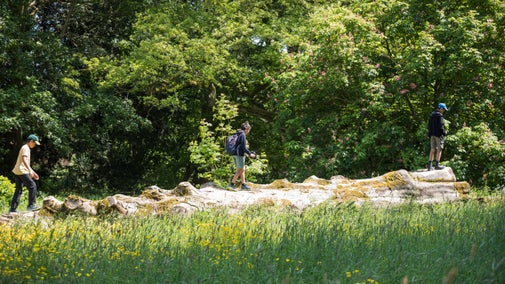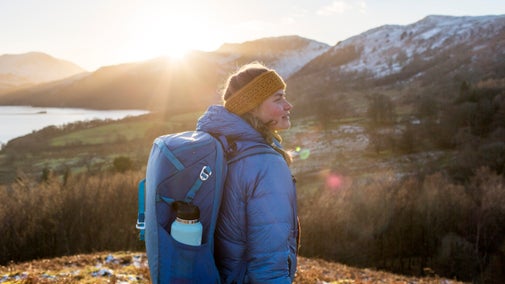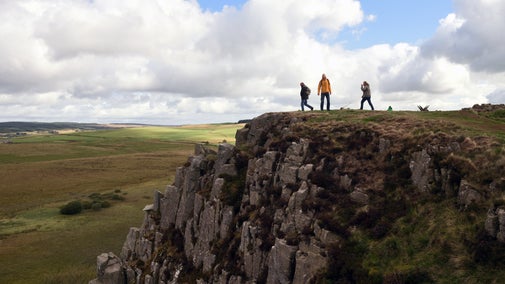
Discover more at Cragside
Find out when Cragside is open, how to get here, the things to see and do and more.

Stretching your legs in the cool winter air is a great way to blow away the cobwebs and recharge your batteries. You could re-discover some of your favourites hidden gems, or perhaps find a couple of new ones on a walk at Cragside. Here’s some of our top picks.
“What’s a Pinetum?”, we hear you say. A Pinetum is a collection of non-native coniferous trees. At Cragside the Armstrongs planted their very own collection in the Debdon Valley. They were chosen especially for their size once at maturity and now this peaceful corner of grounds is home to some of the tallest trees of their kind in the country.
On a sunny day during the winter months, the sun sweeps across the treetops and golden rays shine through the branches creating a dancing shadow display on the forest floor. As you follow the path that hugs the Debdon Burn, you’ll hear the calming sound of water flowing by.
If you’re a regular to Cragside, it’s highly likely that you will have come across ‘Douglas’. This friendly face peering out from between the trees was carved from a fallen Douglas Fir tree which gives him his affectionate nickname. He is officially called the Green Giant and was carved by local wood sculpting artist Tommy Craggs. He’s nestled up the bank shortly after the timber bridge which leads to the Pinetum. You can get up close to him for lots of photos. On a cold day, ‘Douglas’ has a frosted white beard too.
Nelly’s Moss is a pair of lakes on the top of the estate. They were sculpted into the landscape and used to store the much-needed water for William Armstrong’s hydroelectricity creation. There’s a path that runs around both lakes that’s roughly 1 and half miles. It’s a great place to take the kids after lots of running around at the play area. Park at Crozier car park and follow the blue waymarkers.

You can witness the start of William Armstrong's hydroelectricity system. The Timber Flume channelled water from the nearby moorland into Nelly's Moss Lakes. To find the Flume, follow the path around the Lakes. Towards the top of the north lake you will come across a stream spilling into the lakes, next to a wooden walkway. The path alongside the stream leads to the Flume. Wellies or walking boots are essential, especially during the winter months.
Golden hour is that magical time of day when the sun casts a warming glow shortly before it sets. The conditions need to be just right but before the sun ducks behinds the valley, it can shine a rich golden light on to the front of the House. Head along to the Iron Bridge to see if you can catch this special moment that only happens during the winter months.

Find out when Cragside is open, how to get here, the things to see and do and more.
Dog are welcome at Cragside - and we love meeting them too. With over 40 miles of footpaths, Cragside is great place to stretch your legs with your four-legged friend. Read our top tips to help make the most of your visit.

Cragside is often considered to be Britain’s original smart home. Discover more about the creation of Cragside and the people who made the remarkable place we know today.

Explore the ultimate landscaped garden in Northumberland. With spectacular vision, Victorians William and Margaret Armstrong transformed the grounds from a bare moorside into a fantasy mountain landscape. Created for beauty and function you’ll discover towering trees, overflowing flower beds, trickling burns, dramatic water cascades and engineered lakes that were created to harness the power of water.

Plan a visit to one of the special countryside places in our care and discover the benefits of being in the great outdoors. Pack your walking boots and get ready to explore woodlands, valleys and rivers.

Explore some of the finest landscapes in our care on coastal paths, accessible trails, woodland walks and everything in between. Find the best places to walk near you.

Explore the North East's wide open spaces on foot or by bicycle. There are nature reserves, vast estates and huge swathes of undulating countryside to discover, as well as plenty of wildlife to spot.
